#Science and Technology
Explore tagged Tumblr posts
Text
"Scientists in Singapore have broken a long-standing limitation on the ability to generate electricity from flowing water, suggesting that another elemental force of nature could be leveraged for renewable electricity: rain.
With the simplest and smallest scale test setup, the team could power around 12 LED lightbulbs with simulated rain droplets flowing through a tube, but at scale, their method could generate meaningful amounts that could rival rooftop solar arrays.
Singapore experiences significant rainfall throughout the year, averaging 101 inches (2581 millimeters) of precipitation annually. The idea of generating electricity from such falling water is attractive, but the method has long been constrained by a principle called the Debye Length.
Nevertheless, the concept is possible because of a simple physical principle that charged entities on the surface of materials get nudged when they rub together—as true for water droplets as it is for a balloon rubbed against the hair on one’s head.
While this is true, the power values thus generated have been negligible, and electricity from flowing water has been limited to the driving of turbines in hydropower plants.
However, in a study published in the journal ACS Central Science, a team of physicists has found a way to break through the constraints of water’s Debye Length, and generate power from simulated rain.
“Water that falls through a vertical tube generates a substantial amount of electricity by using a specific pattern of water flow: plug flow,” says Siowling Soh, author of the study. “This plug flow pattern could allow rain energy to be harvested for generating clean and renewable electricity.”
The authors write in their study that in existing tests of the power production from water flows, pumps are always used to drive liquid through the small channels. But the pumps require so much energy to run that outputs are limited to miniscule amounts.
Instead, their setup to harness this plug flow pattern was scandalously simple. No moving parts or mechanisms of any kind were required. A simple plastic tube just 2 millimeters in diameter; a large plastic bottle; a small metallic needle. Water coming out of the bottle ran along the needle and bumped into the top section of the tube that had been cut in half, interrupting the water flow and allowing pockets of air to slide down the tube along with the water.
The air was the key to breaking through the limits set by the Debye Length, and key to the feasibility of electricity generation from water. Wires placed at the top of the tube and in the cup harvested the electricity.
The total generation rate of greater than 10% resulted in about 100 watts per square meter of tube. For context, a 100-watt solar panel can power an appliance as large as a blender or ceiling fan, charge a laptop, provide for several light bulbs, or even a Wi-Fi router.
Because the droplet speeds tested were much slower than rain, the researchers suggest that the real thing would provide even more than their tests, which were of course on a microscale."
-via Good News Network, April 30, 2025
#singapore#asia#rain#renewable energy#renewables#clean energy#electricity#science and technology#solarpunk#good news#hope
2K notes
·
View notes
Text
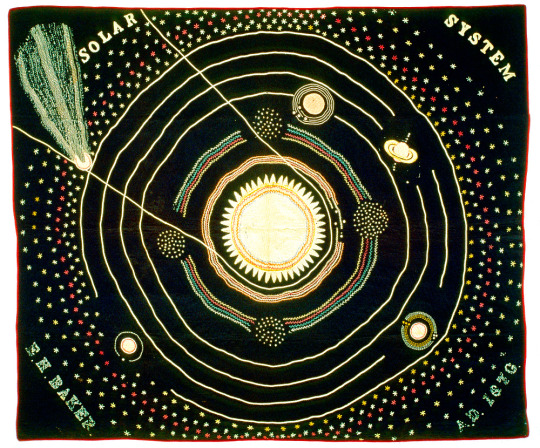
In the autumn of 1883, a paper in the nation's capital reported that "an Iowa woman has spent 7 years embroidering the solar system on a quilt" — to teach astronomy in an era when women could not attend college. Her story.
#Women's History Month#women's history#astronomy#craft#quilting#space#science#science and technology#history and literature#culture and society
7K notes
·
View notes
Text

Does a USB drive get heavier as you store more files on it?
Nope. Paradoxically (and theoretically), the more you save on a flash drive, the lighter it gets.
USB drives use Flash memory, which means the the ones and zeros of the data are stored on transistors.
When you save data, a binary zero is set by charging the float gate of the transistor, and a binary one is set by removing the charge.
To charge it, we add electrons, and the mass of each electron is 0.00000000000000000000000000091 grams.
This means that an empty USB drive (which mostly holds zeros) weighs more than a full USB drive (which has ones and zeros). Add data, reduce the weight.
#usb charger#usb port#usb cable#usb#technews#minimal techno#technoblade#technology#tech magic#tech memes#science and technology#science acumen#scientific illustration#scifi#science#the glass scientists#mad scientist#computer science#computer accessories#mobile application development#mobile app development
1K notes
·
View notes
Text
Less technology used for evil, more of this shit
vimeo
#hope posting#cyborg#cybernetics#transhumanism#disability#physical disability#actually disabled#biopunk#cyberpunk#not an action#Vimeo#science and technology#art#I don't even know what to call this kind of art but this IS art#experimental art
237 notes
·
View notes
Text

'Whatever your future career, save with Post Office Savings Bank'
Poster advertising the British Post Office Savings Bank (c. 1960). Artwork by William Hoyle. The state-owned Post Office Savings Bank is now known as National Savings and Investments (NS&I).
#vintage poster#1960s#Post Office Savings Bank#bank#savings#career#arts#science and technology#british#money#cash
29 notes
·
View notes
Text

Via print:

#art#scifi#cyberpunk#digital art#aesthetic#science fiction#sci fi#scifiart#futuristic#scifi art#scifi aesthetic#sciencefiction#science fiction art#science and technology#snow#winter#robot art#cybernetic#cyber aesthetic#cyberpunk aesthetic#cyberpunk art#mecha art#sci fi and fantasy#scififantasy#sovietwave#digital artist#digital drawing#digital painting#digital illustration#not my art
253 notes
·
View notes
Text
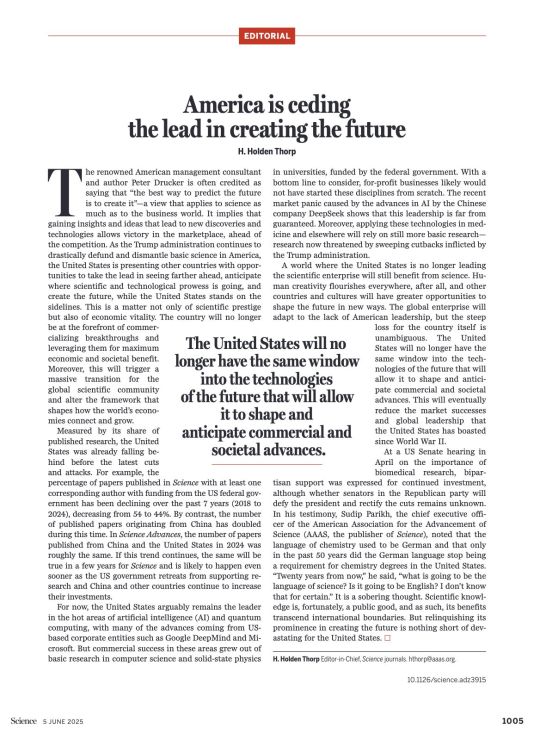
Holden Thorp on the end of the American era of Science. We can stop it but it means everyone has to step up and fight. Now.
12 notes
·
View notes
Text

Rare earths for better magnets. Ad for Bell Laboratories - 1970.
#vintage advertising#vintage illustration#the bell system#bell telephone#bell labs#bell laboratories#magnets#magnetism#rare earth magnets#conductivity#super conduction#super conductivity#science and technology#tech#technology#r&d#research & development#vintage tech
24 notes
·
View notes
Text


Neka Kayda was named by the Karankawa, a Native American tribe from the Texas Gulf Coast who share the same land as the Red ‘Ghost’ Wolves.

Within these Red ‘Ghost’ Wolves was ancient Red Wolf DNA, offering a rare opportunity to recover lost genes and reshape the future of their conservation.


Neka Kayda is the first ever Red ‘Ghost’ Wolf clone.
She brings new hope and opportunity for restoring genetic diversity to the Red Wolf population.

De-extinction tools and technologies made Neka Kayda’s cloning possible.
She stands as proof that de-extinction science can protect not only lost species, but those still with us and in need of saving.

Our de-extinction toolkit will continue advancing conservation through new and innovative approaches.

#Neka Kayda#Karankawa#Native American tribe#Texas Gulf Coast#red ghost wolves#clone#cloning#de extinction#ancient Red Wolf DNA#dna#red wolf#coyote#genetic diversity#genetic engineering#conservation#science and technology#innovation#ancestral dna#colossal biosciences
8 notes
·
View notes
Text
Anti-Sisyphus: A Reflection after being rejected from a PhD Program at DTU
I have been trying to get back to writing, for non-academic purposes, again. And after my latest PhD application rejection, I figure, this might be the best opportunity for me to start writing non-academic analytic essays again.
I got rejected by the Danmarks Tekniske Universitet (DTU) for a PhD program under their Department of Technology, Management, and Economics. The PhD program is also under the EU MOVEO project, a project which tries to conduct research on the inclusivity of transport in the EU. This rejection hits quite differently than the others - hence why I'm writing on my Tumblr page again. This is the tenth PhD application rejection I got, so far in the span of less than a year since my master's graduation ceremony. I had felt differently and more optimistically about this PhD application and program because the program is directly about STS, the field which tries to use social studies perspectives on the social of the natural sciences, a field which I'm madly interested in, and have extensive knowledge about and experience in. I really took time in making the reflective essay used for the application. I have the relevant experience of conducting STS research, which I think would actually be my competitive advantage compared to the other applicants, considering that not a lot of STS research has been done. I have quite a clear understanding of what I will do with the research if I had gotten accepted to the program - something which I don't always have about the PhD programs I applied to.
The rejection email arrived yesterday, on Saturday, at 2-ish PM, my time, or 9-is AM Danish time. I did not get a notification for the email at first. I just realized about the email when I opened the Gmail application several minutes after it had arrived. I was on the train back to my parents' place, and I did not want to ruin my mood during the trip, so I decided to open it after I got home and with my friends, Lars and Leo, being at least virtually present as I opened it. Several times during the trip, I clicked on the email again and again, and I had to restrain myself from reading the email; I couldn't understand the first part of the email anyway, as it's written in Danish. When I arrived at my parents' place, I became more and more anxious about what's inside the email.
In all my past applications, I have only managed to get into a further selection stage for one application, for the Cawthron Institute Scholarship at the Victoria University of Wellington's Geography/Environmental Studies PhD program. When I got the email about the first stage result of that scholarship, I was about to run at 6-ish AM my time, as New Zealand is several hours ahead of me. When I did my morning 24-minute running routine that day, I was already telling myself to brace for the bad news of being rejected by the scholarship team. I was at peace with that apocalyptic prediction about the email. I felt good about not having to worry about what that email entailed, what it could mean for me. I felt this sense of peace. When I got back to my place, I pushed the activity slot of opening that email quite back in the queue as I did not really need to read about being rejected and some templatic, fake, consolation message about the rejection and their attempt to rescucitate my motivation to apply to some other PhD applicaitons out there. I finally got to opening the email, I think it was already during brunch time. Then, there it was in the email, I got into the next stage of the selection process for the scholarship. I was so surprised. I really did not think that I could get it.
Now, that is sort of the go-to sign I'm looking for whenever I'm about to open a reply to my PhD applications: "Am I feeling at peace before opening the email?" When I eventually got rejected from that scholarship at the last selection stage, I wasn't feeling the same peace feeling after seeing the reply email in my inbox. The false belief then became reinforced so strongly in my head that I forced myself not to be giddy or to feel that fervently in any way whenever I received a reply. I suppose that it doesn't work since, even though I made myself feel "peace", I still got rejected again and again. I also did not have that feeling when I eventually lied down last night in my bed and opened the email. Underneath the Danish text, the English text plainly said that I got rejected, without any explanations of why, just rejection. Another reason why this rejection hurts quite deeply is that I don't have many other PhD applications on rotation - something which made me question my "suitability" in academia.
This whole ordeal, PhD applications, has been like an anti-Sisyphus activity for me. As Sisyphus was condemned to roll up a huge boulder up a hill only for it to roll down and Sisyphus to roll it back up, I, on the other hand, feel like I have to plunge myself further and further into this unknown, dark, and consuming abyss. Just like a blackhole, this abyss, which I'm falling further and further seems to also "take", "absorb", every mass, or in my case, spirit and confidence, away from me. I find the abyss analogy apt as all but one of the application processes I applied to did not leave any meaningful feedback about what made me get rejected from the application, and hence, I feel like I'm pouring all of this energy and effort just for some unexplained "black box"-effectuated hands to beat me up again and again as I'm diving deeper and deeper into the abyss.
I know that I have been saying to myself that I might not fit in academia every time I got rejected for a PhD program. However, this time, this rejection feels very different; it feels like it knocks down the last worth pillar I have about my sense of belonging in the academic world.
I know it's about the journey. I know it's about giving yourself hope in times of darkness. It just hurts. It really hurts to be rejected by fellow STS researchers.
I used to feel angry, pissed off at the PhD process which rejected me. Now, I'm just tired. I'm thinking that maybe I have to find other routes from fleeing this country.
On the other hand, when I looked back ever since that second rejection by Cawthron Institute, a lot of things have changed. Back then, I never really thought that I could ever take my PhD abroad. Now, I know that I can - even though I still question the time frame of when it will happen. I know which universities have funded PhD programs. I still have four other PhD applications ahead of me, one of which I have a good feeling and interest in.
The abyss might not have beaten me in taking all of my mass away from me, but it sure is depleting. And as I only try to gauge the things ahead of me, I become even more depressed about where I am. I know I have come a long way. I now have a tool belt, which I think can get me out of the abyss and land on a good PhD program. But it sure sucks to be falling this deep, this far, and without a light to guide me.
#phdjourney#phd research#phd applications#food for thought#long post#self worth#academic validation#student life#science and technology#Science and Technology Studies#STS
5 notes
·
View notes
Text
Here's the top 2 stories from each of Fix The News's six categories:
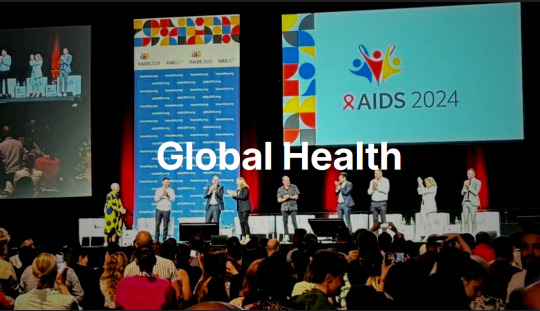
1. A game-changing HIV drug was the biggest story of 2024
In what Science called the 'breakthrough of the year', researchers revealed in June that a twice-yearly drug called lenacapavir reduced HIV infections in a trial in Africa to zero—an astonishing 100% efficacy, and the closest thing to a vaccine in four decades of research. Things moved quick; by October, the maker of the drug, Gilead, had agreed to produce an affordable version for 120 resource-limited countries, and by December trials were underway for a version that could prevent infection with just a single shot per year. 'I got cold shivers. After all our years of sadness, particularly over vaccines, this truly is surreal.'
2. Another incredible year for disease elimination
Jordan became the first country to eliminate leprosy, Chad eliminated sleeping sickness, Guinea eliminated maternal and neonatal tetanus, Belize, Jamaica, and Saint Vincent & the Grenadines eliminated mother-to-child transmission of HIV and syphilis, India achieved the WHO target for eliminating black fever, India, Viet Nam and Pakistan eliminated trachoma, the world’s leading infectious cause of blindness, and Brazil and Timor Leste eliminated elephantiasis.
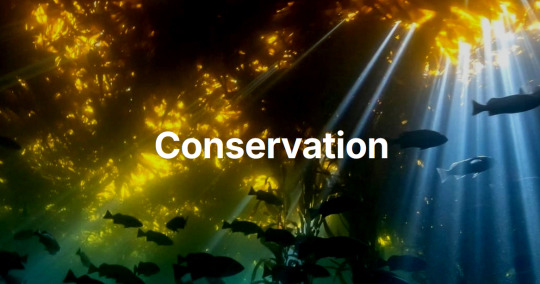
15. The EU passed a landmark nature restoration law
When countries pass environmental legislation, it’s big news; when an entire continent mandates the protection of nature, it signals a profound shift. Under the new law, which passed on a knife-edge vote in June 2024, all 27 member states are legally required to restore at least 20% of land and sea by 2030, and degraded ecosystems by 2050. This is one of the world’s most ambitious pieces of legislation and it didn’t come easy; but the payoff will be huge - from tackling biodiversity loss and climate change to enhancing food security.
16. Deforestation in the Amazon halved in two years
Brazil’s space agency, INPE, confirmed a second consecutive year of declining deforestation in the Brazilian Amazon. That means deforestation rates have roughly halved under Lula, and are now approaching all time lows. In Colombia, deforestation dropped by 36%, hitting a 23-year low. Bolivia created four new protected areas, a huge new new state park was created in Pará to protect some of the oldest and tallest tree species in the tropical Americas and a new study revealed that more of the Amazon is protected than we originally thought, with 62.4% of the rainforest now under some form of conservation management.
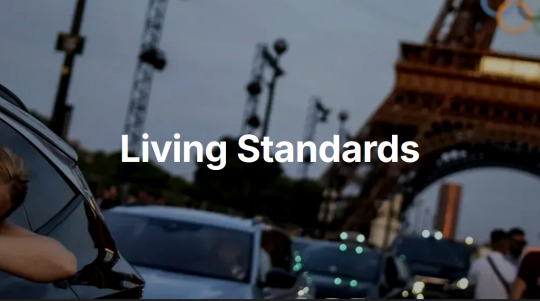
39. Millions more children got an education
Staggering statistics incoming: between 2000 and 2023, the number of children and adolescents not attending school fell by nearly 40%, and Eastern and Southern Africa, achieved gender parity in primary education, with 25 million more girls are enrolled in primary school today than in the early 2000s. Since 2015, an additional 110 million children have entered school worldwide, and 40 million more young people are completing secondary school.
40. We fed around a quarter of the world's kids at school
Around 480 million students are now getting fed at school, up from 319 million before the pandemic, and 104 countries have joined a global coalition to promote school meals, School feeding policies are now in place in 48 countries in Africa, and this year Nigeria announced plans to expand school meals to 20 million children by 2025, Kenya committed to expanding its program from two million to ten million children by the end of the decade, and Indonesia pledged to provide lunches to all 78 million of its students, in what will be the world's largest free school meals program.
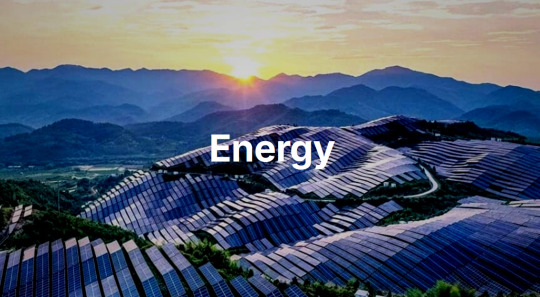
50. Solar installations shattered all records
Global solar installations look set to reach an unprecedented 660GW in 2024, up 50% from 2023's previous record. The pace of deployment has become almost unfathomable - in 2010, it took a month to install a gigawatt, by 2016, a week, and in 2024, just 12 hours. Solar has become not just the cheapest form of new electricity in history, but the fastest-growing energy technology ever deployed, and the International Energy Agency said that the pace of deployment is now ahead of the trajectory required for net zero by 2050.
51. Battery storage transformed the economics of renewables
Global battery storage capacity surged 76% in 2024, making investments in solar and wind energy much more attractive, and vice-versa. As with solar, the pace of change stunned even the most cynical observers. Price wars between the big Chinese manufacturers pushed battery costs to record lows, and global battery manufacturing capacity increased by 42%, setting the stage for future growth in both grid storage and electric vehicles - crucial for the clean flexibility required by a renewables-dominated electricity system. The world's first large-scale grid battery installation only went online seven years ago; by next year, global battery storage capacity will exceed that of pumped hydro.
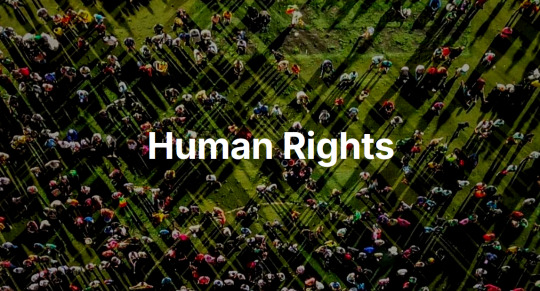
65. Democracy proved remarkably resilient in a record year of elections
More than two billion people went to the polls this year, and democracy fared far better than most people expected, with solid voter turnout, limited election manipulation, and evidence of incumbent governments being tamed. It wasn't all good news, but Indonesia saw the world's biggest one day election, Indian voters rejected authoritarianism, South Korea's democratic institutions did the same, Bangladesh promised free and fair elections following a 'people's victory', Senegal, Sri Lanka and Botswana saw peaceful transfers of power to new leaders after decades of single party rule, and Syria saw the end of one of the world's most horrific authoritarian regimes.
66. Global leaders committed to ending violence against children
In early November, while the eyes of the world were on the US election, an event took place that may prove to be a far more consequential for humanity. Five countries pledged to end corporal punishment in all settings, two more pledged to end it in schools, and another 12, including Bangladesh and Nigeria, accepted recommendations earlier in the year to end corporal punishment of children in all settings. In total, in 2024 more than 100 countries made some kind of commitment to ending violence against children. Together, these countries are home to hundreds of millions of children, with the WHO calling the move a 'fundamental shift.'
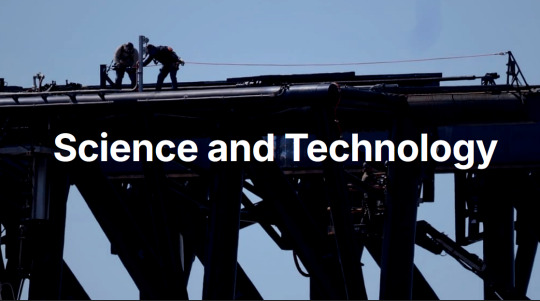
73. Space exploration hit new milestones
NASA’s Europa Clipper began a 2.9 billion kilometre voyage to Jupiter to investigate a moon that may have conditions for life; astronomers identified an ice world with a possible atmosphere in the habitable zone; and the James Webb Telescope found the farthest known galaxy. Closer to Earth, China landed on the far side of the moon, the Polaris Dawn crew made a historic trip to orbit, and Starship moved closer to operational use – and maybe one day, to travel to Mars.
74. Next-generation materials advanced
A mind-boggling year for material science. Artificial intelligence helped identify a solid-state electrolyte that could slash lithium use in batteries by 70%, and an Apple supplier announced a battery material that can deliver around 100 times better energy density. Researchers created an insulating synthetic sapphire material 1.25 nanometers thick, plus the world’s thinnest lens, just three atoms across. The world’s first functioning graphene-based semiconductor was unveiled (the long-awaited ‘wonder material’ may finally be coming of age!) and a team at Berkeley invented a fluffy yellow powder that could be a game changer for removing carbon from the atmosphere.
-via Fix The News, December 19, 2024
#renumbered this to reflect the article numbering#and highlight just how many stories of hope there are#and how many successes each labeled story contains#2024#good news#hope#hope posting#hopeposting#hopepunk#conservation#sustainability#public health#energy#quality of life#human rights#science and technology
3K notes
·
View notes
Text
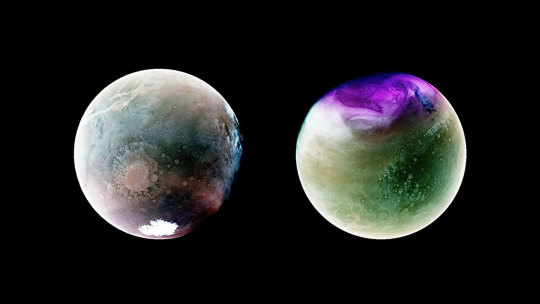
Stunning ultraviolet images of Mars captured by NASA's MAVEN spacecraft, offering scientists new understanding of the planet's atmosphere by rendering atmospheric ozone, clouds, and hazes in different colors. How far we've come from Étienne Léopold Trouvelot's pioneering 19th-century depictions.
524 notes
·
View notes
Text

Uranium contains about 18 million kCal/gram (those are food Calories; capital C), or about 18 billion calories/gram (those are heat calories). One pound of fat is about 3500 kCal or about 3500000 cal, so 1 gram of Uranium would result in about 5,000 pounds worth of fat when comparing energy to energy ☢️
📷: Kazatomprom
#uranium#science#scientists#scientific illustration#science memes#science and technology#science acu#science acumen
99 notes
·
View notes
Text
Designer knew what they were doing 🤣
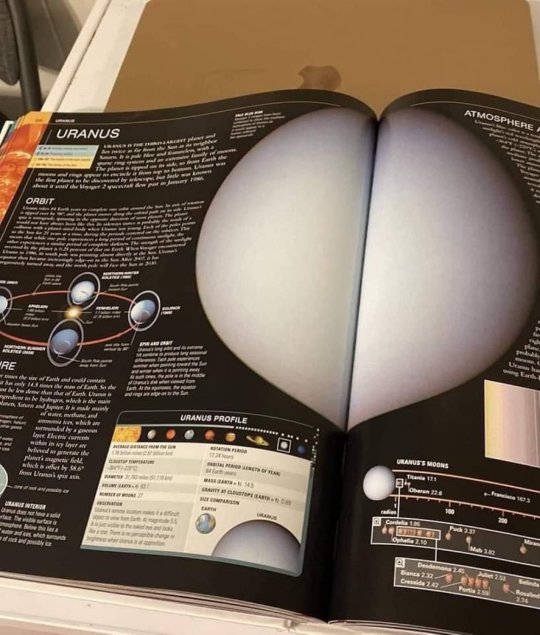
#planet earth#earth#science and technology#space science#star wars#study space#wikimedia commons#wikinley#wikipedia#earth from space#spacecraft#space exploration#outer space#deep space nine#little space#liminal spaces#space#astro observations#astro notes#astro community#astronomy#solar system#uranus in taurus#science acumen#space advances#space adventures
41 notes
·
View notes
